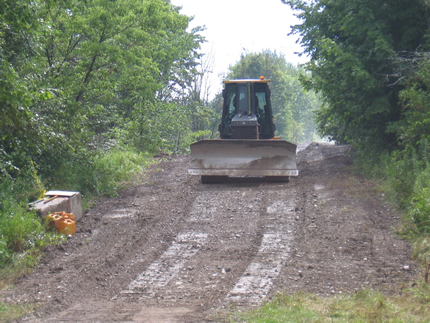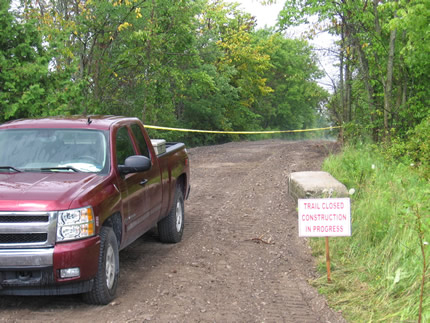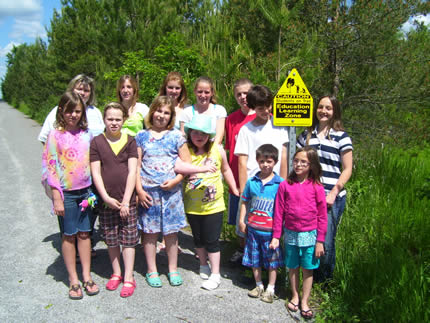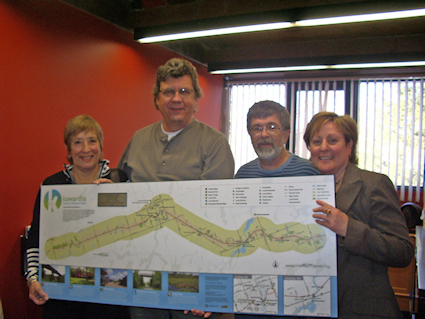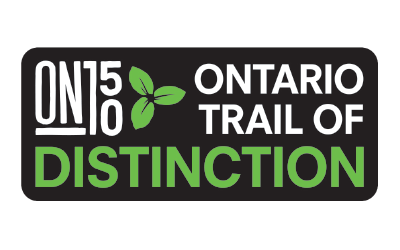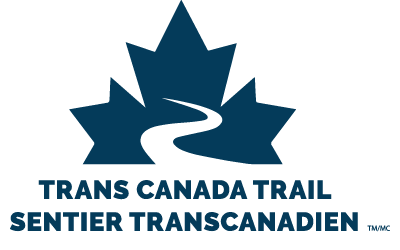What is an electric bicycle?
An electric bicycle meets the definition of “motor-assisted cycle” under the Ontario Motor Vehicle Safety Act, as follows:
- The electric motor must be 500 watts or less.
- The motor must not be capable of propelling the cycle faster than 32 km/hour.
- The motor must disengage when the operator stops pedaling, releases the accelerator or applies the brake.
- The cycle must be capable of being propelled by muscular power using the pedals, but it is not necessary to always be pedaling.
- The operator must wear a bicycle helmet.
- The addition of the power assist enables the rider to pedal with less effort, to achieve a greater distance, to climb hills and ride against the wind more easily. In its size, weight, speed and the driving skills required, the e-bike is similar to the conventional bicycle
For a detailed description of motor-assisted cycles as defined by the Motor Vehicle Act, visit the Ontario Ministry of Transportation web site at www.mto.gov.on.ca/english/dandv/vehicle/emerging/e-bike-faq
Are electric bicycles allowed on the KTCT?
Yes. Following a comprehensive review, KTCTA decided in November 2008 to allow electric bicycles on the KTCT.
Why did KTCTA decide to allow electric bicycles on KTCT?
KTCTA received requests from members of the public to use electric bikes on the KTCT, and as a result carried out a review. KTCTA is supportive of this new green technology, which may benefit trail visitors with disabilities and mobility restrictions. As well, E bikes are powered by an electric motor and muscular power, and have zero emissions.
The maximum speed of 32 km/hour (20 mph) is equivalent to the speed reached by an average cyclist on a traditional bicycle. Regulators wanted electric bicycles to match the speed of conventional bikes. If the speed had been set lower
(24 km/hour), as first proposed, commuter cyclists would find electric bicycles too slow to be a reasonable alternative to travel by car.
Do other Provinces or cities allow electric bicycles on their trails?
Yes. KTCTA is following the lead of other jurisdictions, such as the City of Ottawa, City of Victoria which permit electric bicycles on trails where bicycles are allowed. Electric bicycles are common in many cities in California, where they were developed, and in Europe. As well, currently, eight Canadian jurisdictions (British Columbia, Alberta, Saskatchewan,Manitoba, Quebec, Nova Scotia, Newfoundland and Labrador and the Yukon Territory) have legalized power-assisted bicycles for public road use and are treating these vehicles as conventional bicycles and not as motor vehicles
Do electric bicycles have to follow the same rules as other cyclists on the trail?
Yes. All cyclists must obey the posted etiquette rules and be courteous to others. KTCTA strives to ensure that all visitors to the trail have safe and enjoyable visits.
Do I need a license for my electric bicycle?
No license or registration is required. However, cyclists on electric bicycles are required by law to wear helmets and be 16 years of age in Ontario.
Will this issue be considered again in the future?
The issue of electric bicycles will be reviewed by the KTCTA within the broader context of Ontario Provincial Legislation- as the use of E bikes in Ontario on roads and trails will be reviewed by the Ministry of Transportation in the fall of 2009.
For more information on regional parks and trails, please visit the Ministry of Transportation web site at www.mto.gov.on.ca/english/dandv/vehicle/emerging/e-bike-faq
